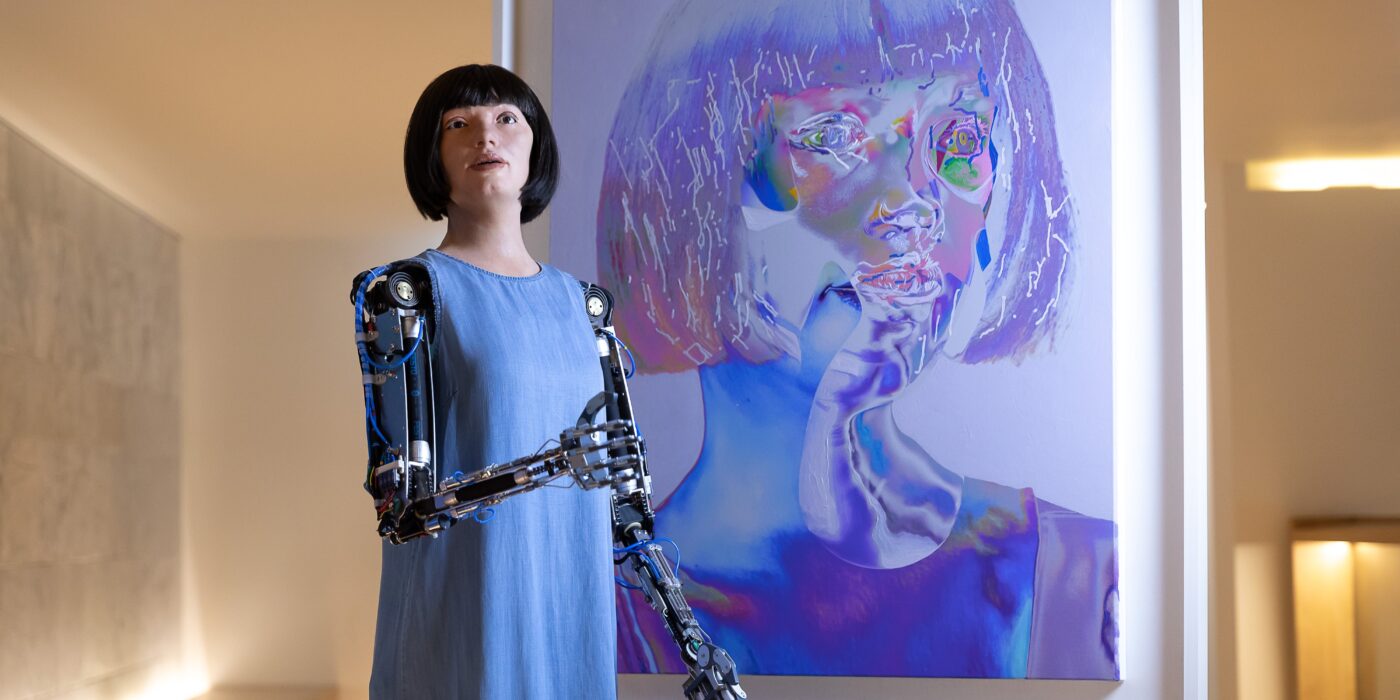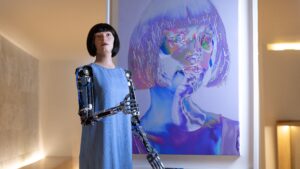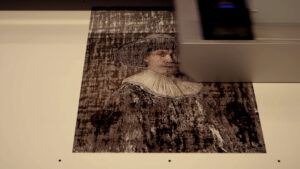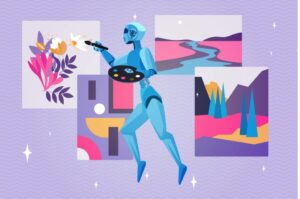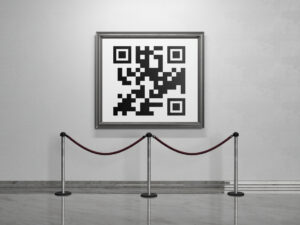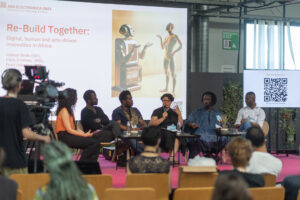Digital Art Innovations
human-like robot creates creepy self-portraits
The field of digital art is growing fast. Innovations in digital art have changed how we create and see art. Thanks to new technologies, we are seeing a new phase in visual culture. The use of AI, machine learning, and advanced algorithms is leading to a big change in how we make art.
Now, AI systems are creative partners. They are helping us move past the old limits of what art can be. This new era is making it hard to tell where the artist ends and the artwork begins. It’s opening up a world where art feels interactive and surrounds us in unique ways. This is a new frontier for both making and experiencing art unlike anything we’ve seen before.
Key Takeaways
- Digital art innovations represent a significant shift in how art is conceived and experienced today.
- Pioneering technologies like AI and machine learning are at the forefront of an artistic expression revolution.
- Creative AI systems have transformed from mere tools to active participants in the creative process.
- The fusion of art and technology has expanded the realm of possibilities for both artists and audiences.
- These advancements promise a future where art continuously evolves alongside technology.
Exploring the World of AI Art Generation
Today, AI Art Generation leads a creative revolution. It is more than just an experiment. AI is becoming a major force in the art world. AI artists stand at the forefront of this digital era.
The Emergence of AI-Driven Artistry
The rise of AI-driven art breaks old boundaries. At first, people doubted AI Artists. Yet, their work now wins acclaim. They use algorithms to create pieces full of emotion. This redefines what we think about creativity and art.
Understanding the Capabilities of AI Artists
AI artists learn from thousands of artworks. They discover what makes art beautiful and unique. Their work can be complex and deeply meaningful. This shows a new way technology and creativity can merge.
Notable AI Artworks and Exhibitions
AI art is shown in global exhibitions. This art mesmerizes viewers and starts conversations about art’s future. It blends with human art, showing a new, innovative side of art.
| Exhibition | Location | Year | Highlights |
|---|---|---|---|
| AI: More than Human | London, UK | 2019 | Interactive works and digital installations that explore AI’s role in art. |
| Artificial Realities | New York, USA | 2020 | Exhibition of AI-generated paintings, featuring landscapes and abstract art. |
| The Next Rembrandt | Amsterdam, Netherlands | 2016 | An AI-generated painting, mimicking the style of Rembrandt using deep learning techniques. |
This new era in AI Art Generation changes how we see and make art. AI artists enrich cultural conversations. They are more than tech tools. They are essential to the art world.
Generative Adversarial Networks (GANs) in Art Creation
Looking at the mix of Generative Adversarial Networks and art is very interesting. It shows how GANs in Art are changing things in a big way. This technology, a key part of Computational Creativity, uses two networks to challenge each other. This process evolves what artificial intelligence can produce.
In this setup, one part makes images and the other checks them. Because of this setup, GANs can create art similar to human artists. This shows the power of Creative AI Systems. It also sparks thoughts on creativity and how tech fits into art.
| Feature | Impact on Art | Examples |
|---|---|---|
| Variety of Styles | Enables diverse artistic expressions | Abstract, realism, impressionism |
| Speed of Creation | Rapid testing and development of new art forms | Interactive Art Exhibits |
| Innovative Collaboration | Blends human and AI creativity | Collaborative art installations |
Generative Adversarial Networks have a big impact on how art is made. They change how artists work and what tools they use. Artists are now exploring new artistic spaces with the help of GANs. This marks the beginning of a fresh chapter where Creative AI Systems and human creativity work together to push the artistic boundaries.
Neural Style Transfer: Blending Art with Technology
Neural Style Transfer brings art and tech together in a new way. It combines AI with artistic creation. This mixture not only opens new doors for art but also shows the power of AI in creating art. It changes how we think and make art.
Breaking Down the Neural Style Transfer Process
Neural Style Transfer uses deep neural networks to mix the style of one image with the content of another. The process starts with a content image and a style image. The network then works to make the content image look like the style image. This creates a new image that has both the content and style, blending art and technology in a unique way.
Impacts of Neural Style Techniques on Artistic Production
Neural Style Transfer changes how art is made. It allows artists to explore and create in new ways. With AI, artists can make art that was hard to imagine before. This pushes traditional art into new territories, creating a unique style in AI-assisted art.
| Feature | Impact on Traditional Art | Impact on Modern Art |
|---|---|---|
| Style Adaptation Speed | Highly accelerated compared to manual techniques | Fosters rapid experimentation and diverse outputs |
| Access to Diverse Styles | Enables cross-era style blending, previously restricted by skill | Expands the palette of style choices far beyond traditional limits |
| Customization Degree | Limited by the artist’s manual skill | Almost limitless, powered by algorithmic personalization |
Machine Learning’s Role in Evolving Art Forms
The blend of Machine Learning in Art is far from a quick phase. It’s a key part of how art changes today. It helps create Evolving Art Forms by introducing Algorithmic Art. This broadens the world of Computational Creativity. These new tools push artists to rethink creativity’s limits.
Exploring this area, I’ve seen how machine learning views data in a unique way. It sees them as more than facts; they’re the heart of creative ideas. This leads to what’s called Algorithmic Art. Here, art is born from patterns and forms found using computer logic. And it touches our emotions like any other human-made art.
- The role of machine learning in creating dynamic art pieces that adapt over time.
- Machine learning’s capability to analyze current trends and generate predictive models of what could become popular in the artistic community.
- Real-time collaboration between artists and AI to create interactive installations.
This creative teamwork points us to a future full of ever-changing art and brand-new art styles. Computational Creativity leads this journey. It’s not just about making art differently. It changes how we think about art. And it lets us dive into new feelings it can bring out.
Machine learning’s impact stretches further. It also changes how we enjoy and understand art. This tech has made a spot in modern art. It’s giving rise to artists unlike any before. They break free from old rules about what art is or where it can go.
Best AI Character Generator You Should Know in 2024
Algorithmic Art: A New Age of Computational Design
In the world of digital art, algorithmic art is something special. It brings together math and beauty in a unique way. This type of art shows us how numbers and computer programs can make beautiful works. These artworks not only look amazing but also make us think.
From Algorithms to Aesthetics: The Journey of Algorithmic Art
Algorithmic art has changed how we think of art. It combines yesterday’s painting techniques with today’s technology. So, we’ve moved from simple computer instructions to systems that can make detailed pictures. This shows how tech and creativity can work together. And it’s all about turning data into art you can look at and understand.
How Algorithmic Art is Shaping Future Design Trends
Looking ahead, algorithmic art is making a big impact on design. It’s changing what we think is possible with digital art. This change is sparking new ideas in media, ads, and learning. And as tech gets better, so do these artistic creations. This makes art that’s not just for looking at, but for interacting with, too.
| Aspect | Influence on Design Trends | Potential Future Development |
|---|---|---|
| Personalization | Designs that adapt to user preferences | Increased use of AI to predict user behavior |
| Interactivity | Engaging, dynamic user interfaces | More immersive environments using VR and AR |
| Multimedia Integration | Cross-platform aesthetic coherence | Seamless integration of various media types |
Looking at algorithmic art opens a door to new possibilities. It shows us that in the coming days, computational design is going to do more than just look good. It will change how we see and use art. It’s all about making experiences that surprise and move us.
Computational Creativity: Machines and the Artistic Mind
Computational Creativity is where technology meets art. It’s a place where machines are not just helping but leading creative work. These AI systems are changing how we think about the art-making process, bringing machines into the world of creativity.
Case Studies: When Machines Emulate Human Creativity
AI systems show they can do more than we may think. They compose music, write poems, and make visual art that feels deeply emotional. This makes us wonder: is creativity something only humans can do? Or can machines learn to be creative, too?
Debating the Authenticity of Computer-Generated Artworks
With more computer-made art around, we’re asking big questions. Do these works show real creativity, or are they just the work of complex math? The debate covers not just how the art looks but also deep questions about what it means to be creative. We’re also wondering: can we appreciate art if no human hands made it?
Looking at this issue, it’s key to see the big picture. Mixing human and AI creativity is changing art. This change is pushing old limits and creating a new future for art. The art world is changing, and these systems are leading the way.
What are NFTs and how do they work?
Creative AI Systems and the Future of Artistic Expression
In the art world’s changing landscape, Creative AI Systems are key to defining the Future of Artistic Expression. These systems are more than just tools. They work with artists, adding to the creative process through AI-Assisted Art Production and Machine Learning in Art. This mix of tech and creativity points to a future filled with deeper, more varied art.
One big step forward is how machine learning helps artists. It looks at tons of data and spots patterns we can’t see. These findings can inspire and inform artists, leading to new kinds of art. Thanks to AI-assisted art production, a new art genre is taking shape. It’s both fresh and introspective.
- The integration of Creative AI Systems in multimedia projects
- Use of AI in dynamic sculpture creation
- Machine learning applications in interactive installations
Think about how AI is changing artmaking. Now, AI doesn’t just copy old styles. It also creates brand new looks. This big change is thanks to creative AI systems that get better over time. They mix precision and imagination, showing a new future for art.
“AI is not replacing the artist; rather, it is expanding the canvas of creative potential, empowering artists to explore realms beyond human reach naturally.”
Investigation Finds AI Image Generation Models
To sum up, AI and machine learning are reshaping how we make and see art. The mix of these fields shines a hopeful light on the art future. It’s a future where tech and art walk hand in hand, always growing and changing.
AI-Assisted Art Production: Enhancing Human Creativity
AI-assisted art production is changing the art world fast. It’s not just tech innovation; it changes how we think about creativity. With advanced algorithms, artists dive into new creative spaces.
Collaborative Works: Artists Teaming Up with AI
Art combined with AI brings out new forms of exciting art. This is not about machines replacing artists. It’s more about boosting what artists can do. Together, they make art that’s both sophisticated and rich, pushing boundaries.
Tools and Platforms for AI-Enhanced Art Creation
AI in art has a growing toolkit. There are many platforms making these techs easy for everyone to use. They offer the power and a simple interface for artists who aren’t tech specialists to work with AI.
| Platform | Features | User Base |
|---|---|---|
| Artisto | Real-time style transfer, easy integration | Professional Artists, Designers |
| CanvasAI | Collaborative AI tools, robust community support | Hobbyists, Freelancers |
| SketchMind | Generative sketching, interactive tutorials | Students, Educational Institutions |
Artistic Data Visualization: Informing and Inspiring
In the world of artistic data visualization, the blend of beauty and information is vital. Here, computational design meets the power of storytelling. As an artist in this area, I mix numbers with stories to create data-driven art. This art not only looks great but also teaches and inspires.
The heart of my work is turning complex data into visual styles that everyone can enjoy. This way, we don’t just see numbers but their meaning too. It takes what’s hard to understand and makes it clear. That’s the real magic of artistic data visualization. It shows us the world as it is and where it could go.
| Aspect | Impact on Viewer | Technique Used |
|---|---|---|
| Clarity | Enhances understanding | Minimalist design with bold colors |
| Engagement | Increases interaction | Interactive graphs and sliders |
| Inspiration | Encourages deeper exploration | Layered information and storytelling elements |
Data-driven art makes complicated topics easier to grasp. It helps leaders see different possibilities clearly. And it gives the public a way to understand tricky data. This can lead to smarter choices by everyone.
When creating for a gallery or journal, I follow the rules of computational design. This ensures my work is both pretty and full of accurate data. So, every piece shows data and its story. Viewing it becomes both learning and fun.
So, artistic data visualization mixes technology with art beautifully. It proves that using data creatively can turn boring numbers into powerful stories. These stories can spark changes and new ideas.
Conclusion
Re-build Together: Digital, human and arts-driven innovation in Africa
This journey led me to discover the powerful mix of AI and Art. This blend marks a turning point in digital art history. It’s clear this mix isn’t just a fad; it’s changing art forever. We explored everything from GANs to neural style transfers. It’s amazing to see these tools shaping what art will become.
The tech we talked about is shaking up how we create and enjoy art. It’s helping artists do more. And it’s introducing fresh ways for people to view and interact with art. A mix of human creativity and machine smarts holds so much promise. We’re on the brink of an exciting new chapter in art’s story.
Looking forward, we see these advances continuing to transform art. It’s hard to know exactly what the future holds. But we can be sure AI will keep pushing the boundaries of creativity. Every new idea and technology expands the world of digital art. It shows us that the future is full of endless chances and surprises.
FAQ
What are Digital Art Innovations and how are they affecting creative expression?
Digital Art Innovations use advanced tech like AI and machine learning to make art. They have changed how we do art. Artists can try new creative things and reach people in different ways. This tech allows art to go beyond what was thought possible.
How have AI Art Generations changed the role of artists?
AI Art Generations have made AI part of the art making process. This means artists can create in new, exciting ways. They can work with AI to develop big, complex ideas together. It’s turning artists into partners with AI in their creativity.
Can you explain what Generative Adversarial Networks (GANs) are and their role in art?
Generative Adversarial Networks (GANs) are AI systems that fight to create new things. In art, they make images that look human-made. They are very important in making art that is surprising and complex with the use of AI.
What is Neural Style Transfer and how does it impact the creation of art?
Neural Style Transfer mixes the look of one picture with another using AI. It gives birth to new art by blending different styles. This technique has a big impact on art, offering new ways to combine visuals and create unique pieces.
In what ways is Machine Learning influencing contemporary art forms?
Machine Learning helps artists analyze and create using data. It’s used to make algorithmic art. This new art form is interactive and keeps changing. It blends the artist’s vision with the randomness of AI, creating something new.
What is Algorithmic Art and how is it changing design trends?
Algorithmic Art is art created with computer algorithms. It’s based on math logic. This art style introduces new looks and ways to create. It influences many areas like graphic design and architecture by merging technology with creativity.
How do machines emulate human creativity in computational creativity?
Machines mimic human creativity by combining information in new ways. They use complex algorithms to create art and ideas like humans do. This challenges the idea that creativity is only for people.
What does the future hold for creative AI systems in artistic expression?
The future of AI in art is all about working more closely with humans. It will make creating art easier and allow for more complex works. More AI will be used to help in making art. This means new types of art and experiences for everyone.
How does AI-assisted art production enhance the creative process for artists?
AI in art helps artists by giving them new ways to show their creativity. It allows for big experiments in art. Artists can try new things with their work, like making lots of changes fast. AI makes creating art more interactive and exciting.
What is Artistic Data Visualization and its importance in the digital age?
Artistic Data Visualization makes data easier to understand through art. In a world full of complex data, it makes info fun and easier to get. It’s key for exploring data and showing it in beautiful ways that are as important as the data itself.
